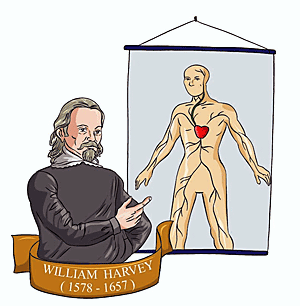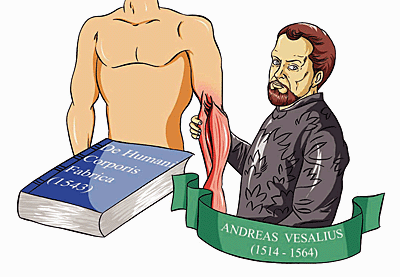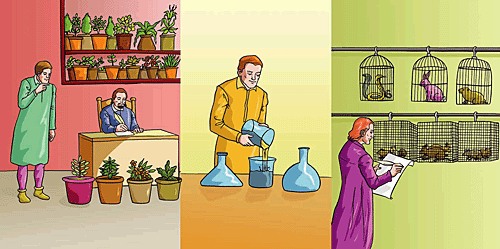English and Its Historical Development, Part 25
(scientific presentations used Latin and Greek as their nomenclature)
To this day, the terminology of such scientific disciplines as biology, botany, chemistry, physics, and medicine is overwhelmingly based on Greek and Latin

William Harvey, the surgeon who discovered the circulation of blood, used Latin to report the final results of his research. He published the Exercitatio Anatomica de Motu Cordis et Sanguinis in Animalibus (1628).

Vesalius, founder of modern anatomy, tried to standardize the form and meaning of anatomical terms by contrasting newly interpreted Greek with medieval terms.

To this day, the terminology of such scientific disciplines as, biology, botany, chemistry, physics, and medicine is predominately derived from Greek and Latin origins.
For example, anyone who enjoys bubbly drinks (soda water, or "pop") should raise a glass and thank Joseph Priestly, the English clergyman and chemist who was attempting to duplicate the natural effervescence of European mineral springs.
Best known for isolating oxygen, in 1767, Priestly introduced carbon dioxide into water, and so he developed the first known example of a carbonated beverage.
Etymology: from 1660, in Boyle's New Experiments, verb use of earlier (1642-1647) participle amalgamate, probably borrowed from Medieval Latin amalgamatus, past participle of amalgamare, from amalgama.Amalgamation, a term from Boyle?
It is possible that amalgamate is a back formation from an earlier amalgamation from 1612, probably formed from English amalgam (an archaic verb "to alloy with mercury", in Boyle's Works).
Robert Boyle, was an Irish chemist who established that air has weight and whose definitions of chemical elements and chemical reactions helped to dissociate chemistry from alchemy (1627-1691).
Alternative origins of amalgamate probably from French amalgamation which was earlier (1578), and may have been the source of the borrowing, or the record of English may be incomplete and does not include a possibly earlier use of amalgamate, to which -ation could easily have been applied.
Whatever the facts of the subject, it was during these early developmental years of chemistry, when Boyle and others, were active in both England and Europe, that a new vocabulary was developing to meet the needs of describing what these men were doing.
Proceed to Part 26, Industrial Evolution.
INDEX or Table of Contents, English and its historical development.
References: sources of information.
